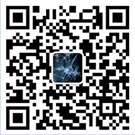

Prof. Man Xiong published a paper in Journal of Clinical Investigation with her collaborators.
Dysfunction of striatal medium spiny neurons (MSNs) is implicated in several neurological disorders, including Huntington’s disease (HD). Despite progress in characterizing MSN pathology in HD, mechanisms underlying MSN susceptibility remain unknown, driving the need for MSNs derived from human pluripotent stem cells (hPSCs), especially subtypes in research and therapy. Here, we established a scalable 3D-default culture system to produce striatal MSNs efficiently from hPSCs by activation of the endogenous sonic hedgehog (SHH) pathway. These cells expressed canonical markers of striatal progenitors and dopamine D1 (D1) and dopamine D2 (D2) MSNs and presented dynamic specification and transcriptional signatures that closely resemble endogenous MSNs at single-cell resolution, both in vitro and post-transplantation in HD mice with quinolinic acid (QA) lesions. Grafted human cells survived and matured into D1-/D2-like MSNs and projected axons to endogenous targets including globus pallidus externus, globus pallidus internus, and substantia nigra pars reticulata to reconstruct the basal ganglia pathways. Functionally, they displayed spontaneous synaptic currents, received regulation from host cortex and thalamus, and were modulated by dopamine to either enhance or reduce neuronal excitability, similar to the endogenous D1-/D2-MSNs, subsequently improving behavior in QA-lesioned HD mice. Our study presents a method for generating authentic MSNs, providing a reliable cell source for HD cell therapy, mechanistic studies, and drug screening.
Link: https://doi.org/10.1172/JCI187941







 Online Appointment
Online Appointment
